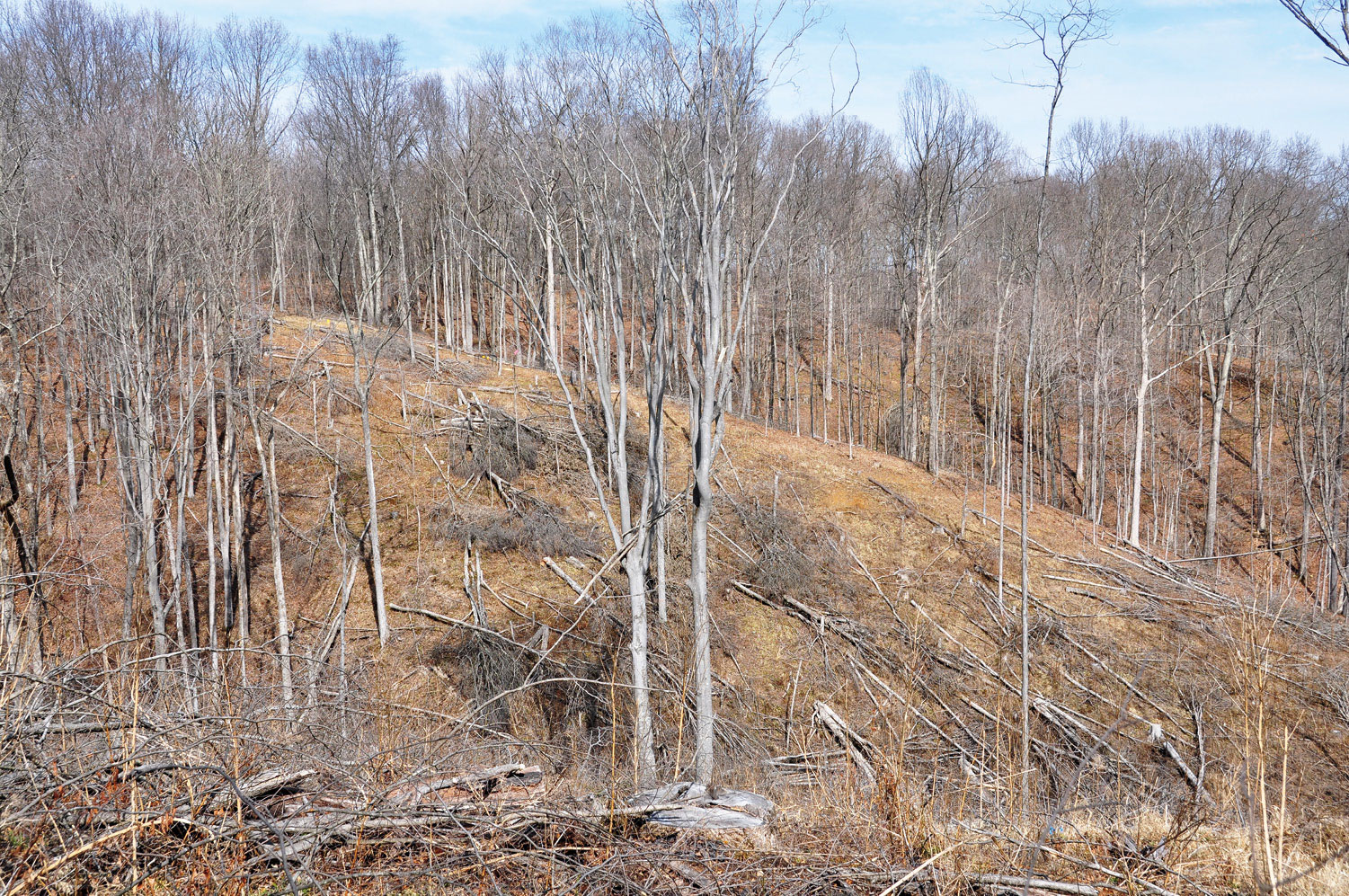Restoring Sustainability for White Oak and Upland Oak Communities: An Assessment and Conservation Plan
White Oak Facts
American white oak is a foundational tree species, currently occupying more than 104 million acres of public and private forestland across much of the eastern and central United States—including a strong presence in Alabama, Arkansas, Georgia, Illinois, Indiana, Iowa, Kentucky, Maryland, Michigan, Minnesota, Missouri, Pennsylvania, North Carolina, Ohio, Tennessee, Virginia, West Virginia and Wisconsin.
 White oak forests support extensive plant and animal biodiversity, providing a critical food source for a variety of wildlife species and serving an important role in maintaining our diverse forest ecosystem.
White oak forests support extensive plant and animal biodiversity, providing a critical food source for a variety of wildlife species and serving an important role in maintaining our diverse forest ecosystem.
Forest sector economic reports from central hardwood region states (where white oak predominates) clearly indicate the importance of oak resources, which generate billions of dollars annually.
White oaks are the most commercially important timber oak—necessary for industries such as furniture, flooring, cabinetry, and wine and spirits.
Overall Report Findings
Due to shifts in land management and ecological changes, an increasing amount of competing tree species have been establishing themselves in the understories of America’s white oak forests.
Competing species, most notably maples and beech, are shading out white oak trees and preventing them from regenerating.
As a result, older white oak trees are not being replaced by younger white oak trees at a pace that will support long-term sustainability.
About 75% of all white oak trees across the eastern United States can be classified as “mature,” while populations of young white oak trees are limited.
Challenges such as climate change, invasive insects and diseases, and behavior change are also impacting white oak sustainability.
Without intervention today, the American white oak population will begin to decline significantly within the next 10 to 15 years, with more extreme declines over the next several decades.
Recommended Forest Management Practices
Reversing the decline of America’s white oak population is possible, but intervention must begin today. To restore the long-term sustainability of America’s white oak forests, and maintain the economic, social and environmental benefits they provide, we need active, cross-boundary collaboration, participation and support from industry, resource professionals, policymakers, landowners and others who can align knowledge and resources behind the following recommended forest management practices, before it’s too late.
The following 10 recommended forest management practices will provide sustainability benefits across all oak forests as well as the upland forests they inhabit.
Crop tree release. This practice is the primary technique used to ensure oaks continue to maintain vigorous growth.
Midstory/understory removal. This practice is aimed at improving the vigor of advance regeneration.
Shelterwood establishment cuts. A shelterwood harvest allows forest owners to capitalize on their timber value and provides a semi-shaded light regime favorable to oaks.
Group openings and gaps cuts. A group opening allows for harvesting of older stands that dominate the region and provides a semi-shaded area around the opening edge that is conducive to oak regeneration.
Two-aged deferment cuts. This practice is a technique of last resort, sacrificing immediate oak regeneration but maintaining future oak regeneration potential.
Site preparation for regeneration. This practice removes trees that are or will compete with oak regeneration.
Afforestation. This practice involves the establishment of new forests with seedlings or seeds, competition control, and at times control of deer and other wildlife.
Underplanting/enhancement. This approach uses artificial regeneration to establish oak that is limited or nonexistent in upland hardwood stands.
Scarification. Scarification is used to help ensure adequate acorn germination and seedling establishment.
Prescribed fire. This approach can be used as a phase in a shelterwood establishment cut, or after a harvest as a liberation or cleaning tool.
Founded in 2017 by the University of Kentucky, the DendriFund and the American Forest Foundation, the White Oak Initiative brings together industries, universities, state and federal agencies, private landowners, conservation organizations and trade associations that are committed to ensuring the long-term sustainability of America’s white oak forests as well as the economic, social and environmental benefits they provide. Learn more about the White Oak Initiative and our recommendations for action at whiteoakinitiative.org.
